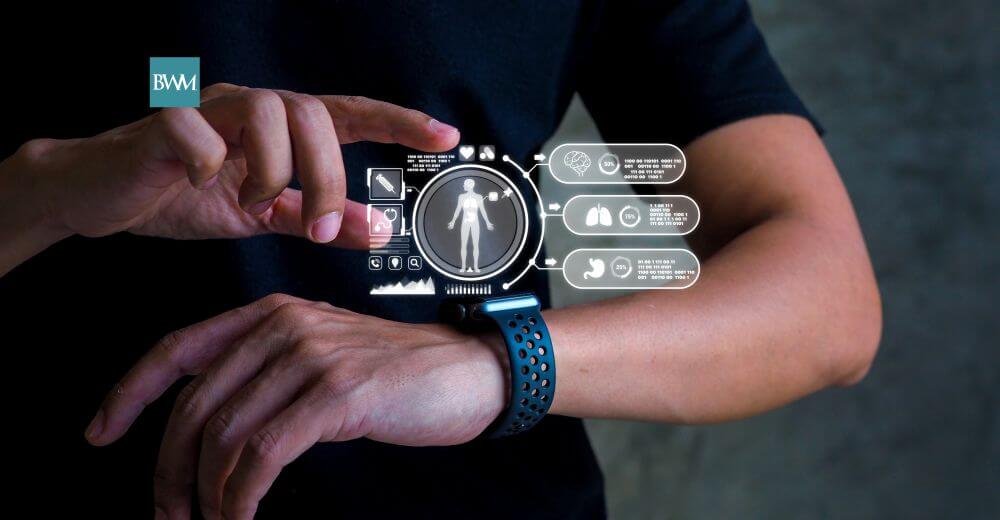The fitness industry has undergone a radical transformation in recent years, driven by technology that allows the exercise to be more intelligent, personal, and networked. At the forefront of this movement are 5G and Internet of Things (IoT), two technologies converging to revolutionize our definition of fitness. By facilitating quicker data transfer, real-time analysis, and effortless device integration, 5G and IoT are driving the next level of fitness technology, making it more efficient and more engaging.
Here’s how these technologies are transforming the future of fitness, from wearables to smart gyms, and their potential to reshape health and wellness.
The Role of 5G in Fitness Tech
The fifth generation of wireless network technology, 5G, offers speed breaking records, low latency, and an ability to connect a massive number of devices simultaneously. These characteristics render 5G a revolutionizer in fitness technology where the use of real-time data and connection is the ultimate priority. Unlike the past generations, 5G will be capable of processing massive amounts of data without any delay, and thus fitness equipment will be able to process and share data in real-time.
In the case of wearables like smartwatches and fitness bands, 5G adds possibilities due to the possibility to stream the data continuously without affecting the battery level. As an example, a jogger with a 5G-compatible smartwatch can receive continuous information about the heart rate, pace, and calories burned, and listen to music or talk to a virtual coach. The latency (time delay) of 5G is typically less than 1 millisecond, that is why the users can make instant adjustments to their routines based on the information they receive in real time.
IoT: The Backbone of Connected Fitness
IoT is the connecting of gadgets that communicate with each other and share information. The fitness industry is focused on its IoT, where even the smart water bottle can communicate with a smart treadmill or wearable sensor, working in unison. The gadgets collect and analyze information and allow users to obtain practical knowledge about how to get the best of their health and performance.
IoT enhances the customization of fitness as well. IoT platforms can create detailed user profiles with data collected using multiple sources, i.e., wearables, gym equipment, and mobile apps. Such user profiles allow the fitness apps to provide personalized exercise routines, nutrition, and healing programs backed with real-time current information. For instance, the fitness app can recommend a shorter exercise routine or more rest time if an IoT-enabled sleep monitor identifies that the sleep quality is poor.
The Synergy of 5G and IoT
The potential of 5G and IoT only unfolds when they are used together, where the synergy between them unlocks a powerful ecosystem in which devices for fitness can talk faster and more effectively, providing a smooth experience to users. The high-speed, low-latency network of 5G is the platform that enables IoT devices to run to their optimal capacity, providing real-time sharing and analysis of data on a never-seen-before scale.
One exciting application of this synergy is in augmented and virtual reality (VR/AR) fitness experiences. With the data processing ability of 5G and device connection capabilities of IoT, fitness companies are building immersive workout platforms. For example, a customer with a VR headset and IoT sensors can experience a virtual spin class, with their actual movements being monitored in real time and the instructor being able to provide real-time feedback. 5G guarantees the video stream and sensor data to be delivered without any delay, ensuring a constant and immersive experience.
A further example is the development of 5G- and IoT-driven smart gyms. The gyms use connected equipment to create an integrated exercise environment. An intelligent gym, for example, may use IoT sensors to track the user’s form while lifting and alert them in real-time to their smartwatch through 5G. This connection not only optimizes the efficiency of workout but also minimizes the risk of injury via accurate technique.
Challenges and Future Prospects
Though promising, 5G and IoT aren’t without drawbacks in the fitness world. Security and privacy are especially a concern since IoT devices capture personal health information that needs to be shielded from intrusions. The expense of 5G technology and IoT devices is also considerable, having a much more limited availability for some customers. But as more become ubiquitous, costs will decrease, and they will become more affordable to a larger group of people.
In the years to come, 5G and IoT convergence in fitness tech will lead to even more opportunities. Artificial intelligence (AI) will become more influential with predictive analytics and hyper-personalization using data collected by IoT devices. For example, AI will consider a user’s history of exercise, sleep, and nutrition to determine when they are prone to burnout and suggest precautions.





